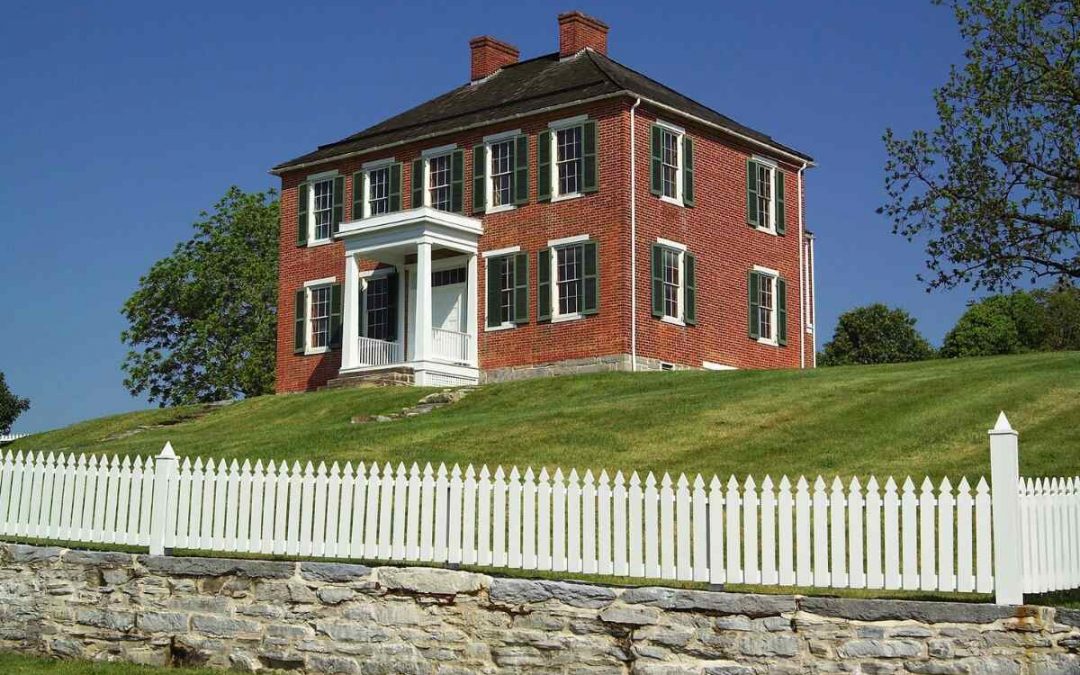No one wants to spend their weekend lawn mowing, weeding, and tending to their delicate daisies. That’s why we’ve gathered these 8 low-maintenance landscaping ideas for Maryland. Follow these tips so you can spend your weekends doing more important things like enjoying our beautiful and historic state.
In this article, we’ll cover:
- Go with Hardscapes
- Choose Perennials
- Use Native Plants
- Build an Outdoor Living Space
- Apply Mulch
- Use Groundcovers
- Install an Automatic Irrigation System
- Opt for Container Gardens
8 Low-Maintenance Landscaping Ideas for Maryland
1. Go with Hardscapes
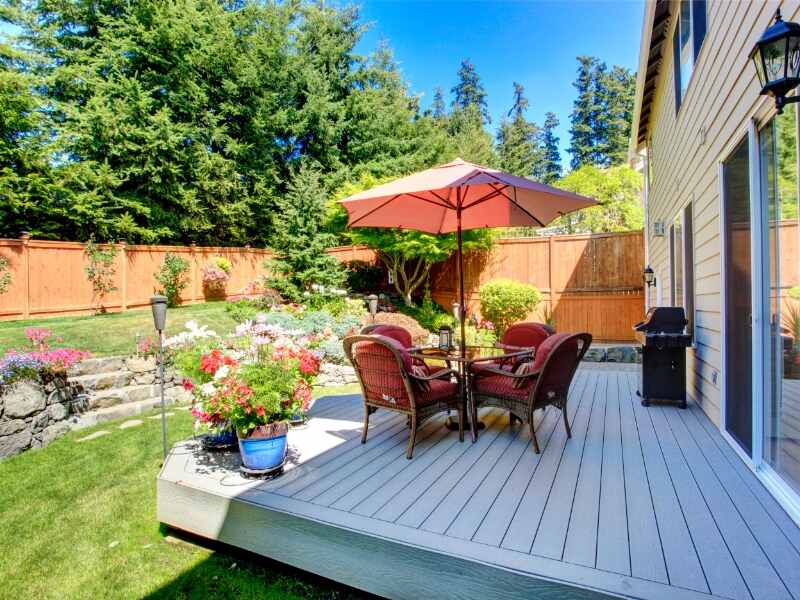
Photo Credit: irina88w / Canva Pro / License
Adding hardscapes to your landscape design is a way to add value to your home while also limiting necessary landscaping maintenance.
Examples of hardscapes:
- Patio
- Deck
- Fire pit
- Walkway
- Retaining wall
Outside of the occasional rinse with a garden hose or pressure washer, these one-time projects generally need very little maintenance. Hardscape materials often include rock, brick pavers, flagstone, or concrete that won’t need weeding or watering.
Advantages of hardscapes:
- Easy to maintain
- Boost curb appeal and increase home value
- Often serve a useful purpose for entertaining or foot traffic
- Less high-maintenance grass to mow
Estimated Cost: Hardscape installation prices vary depending on the project. For example, installing a patio costs most homeowners between $2,127 and $6,500. On the other hand, installing a retaining wall typically costs between $3,622 and $9,582.
2. Choose Perennials
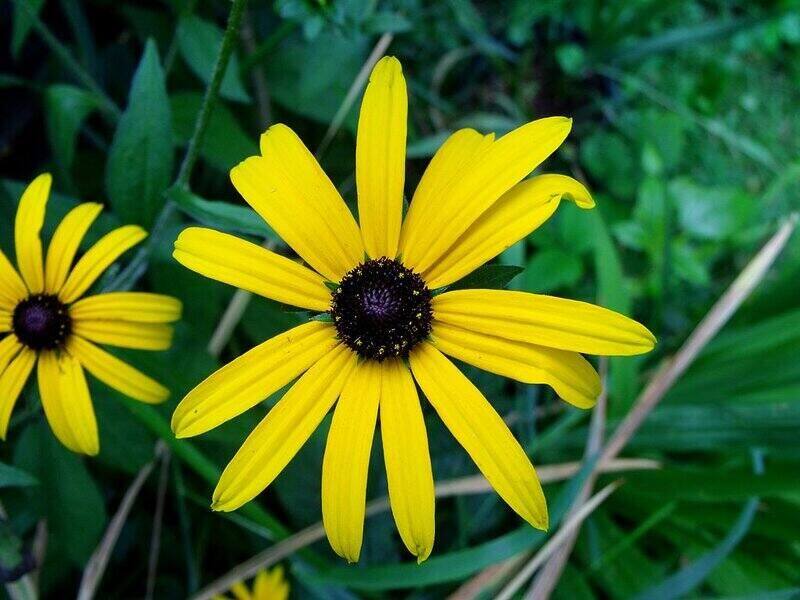
Photo Credit: grassrootsgroundswell / Wikimedia Commons / CC BY 2.0
Add perennials to your landscape for a gift of color that will keep on giving year after year. Unlike annuals, perennials only need to be planted once – saving you the headache of replanting new bulbs every year.
Annuals require back-breaking digging and planting yearly. On top of that, you also need to deal with the added cost of purchasing new bulbs every season.
Recommended perennials:
- Aster
- Black-eyed Susan
- Bleeding heart
- Butterfly weed
- Cardinal flower
- Columbine
- Coralbell
- Coreopsis
- Garden phlox
- Goldenrod
- Stonecrop
Perennials also have the added benefit of developing deep root systems, which in turn helps improve the soil.
Estimated Cost: Costs will vary depending on the perennial you buy. The initial cost is typically more expensive than an annual, but it’s a long-term investment worth making. Buying annuals year after year will eventually cost more than a perennial’s original price.
3. Use Native Plants
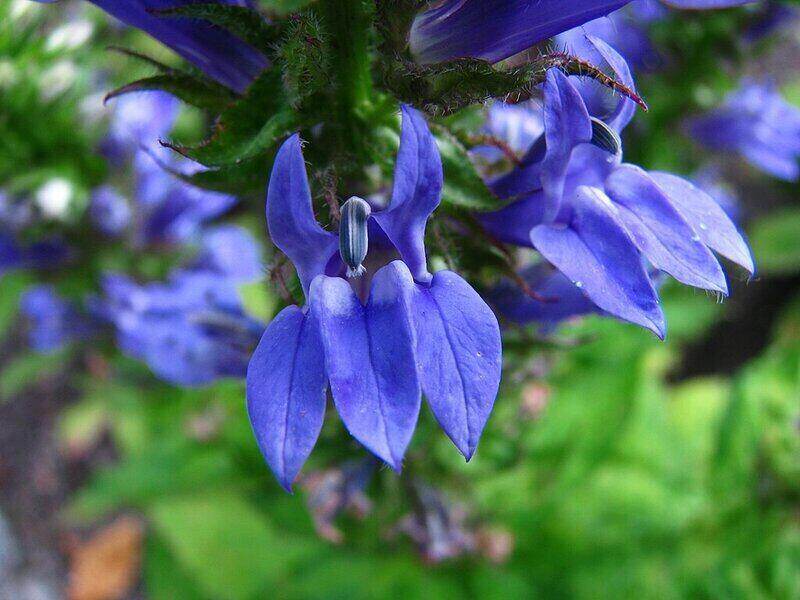
Photo Credit: Agnieszka Kwiecień, Nova / Wikimedia Commons / CC BY-SA 3.0
When in doubt, think local. For an easy-going garden, you want to choose plants native to your region, as these plants have already adapted to the local climate. Naturally, they will need less water, fertilizer, and pest control. These plants can mostly fend for themselves without much interference from you, helping create a low-maintenance garden.
Maryland native plants:
- American water lotus
- Black-eyed Susan
- Butterfly milkweed
- Cardinal flower
- Christmas fern
- Golden groundsel
- Great blue lobelia
- New York ironweed
- Turk’s cap lily
- Wild bergamot
Filling your garden with low-maintenance native plants is also an important part of preserving our ecosystem. Animals and pollinators tend to shy away from the unfamiliarity of non-native plants but are drawn to gardens with plants natural to their local habitat.
Advantages of native plants:
- Reduced water usage
- Less need for pesticides or fertilizers
- Resistant to local climate
- Rarely invasive
- Control erosion
- Restore natural habitats
- Preserve biodiversity
- Reduce rainwater runoff
- Enhance beauty
Estimated Cost: Most homeowners spend between $585 and $3,300 for professional flower bed installation. Price will vary depending on the size of the flower bed and the plants purchased.
4. Build an Outdoor Living Space
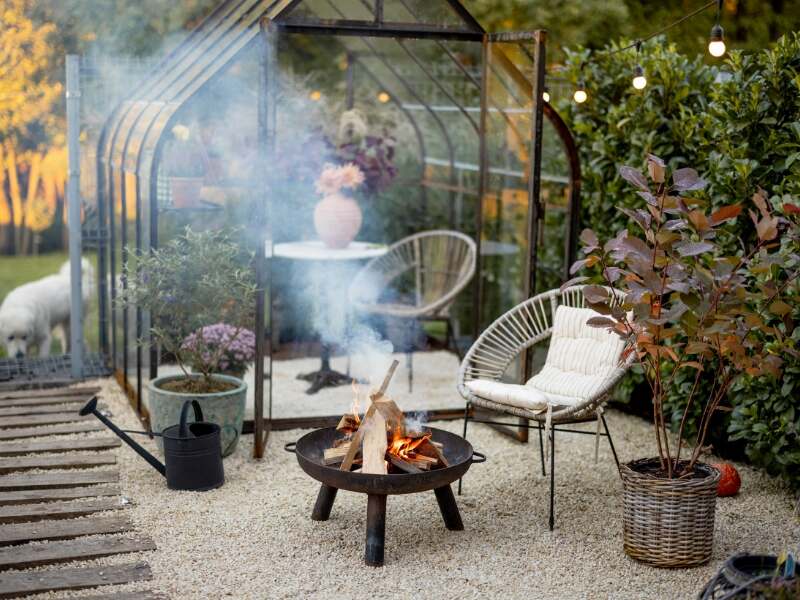
Photo Credit: RossHelen / Canva Pro / License
Building an outdoor living area won’t just provide a great place to enjoy a beautiful spring day but also create a low-maintenance area on your property.
Whether you like to entertain or are looking to encourage outdoor family time, an outdoor kitchen, dining area, or fire pit will all get the job done without adding to the overall maintenance of your landscaping.
Replacing your high-maintenance front yard garden with a beautiful gazebo is another way to eliminate time-consuming and back-breaking tasks like weeding.
Advantages of outdoor living spaces:
- Can replace high-maintenance garden
- Add a useful feature to your yard
- Boost curb appeal
- Increase the value of your home
- Encourage family time outdoors
Estimated Cost: Outdoor living spaces vary in cost. For example, gazebos typically cost $4,828 to $9,930, while the cost of a pergola often ranges from $1,994 to $9,855. For an outdoor kitchen, most homeowners typically spend between $4,551 and $19,000.
5. Apply Mulch
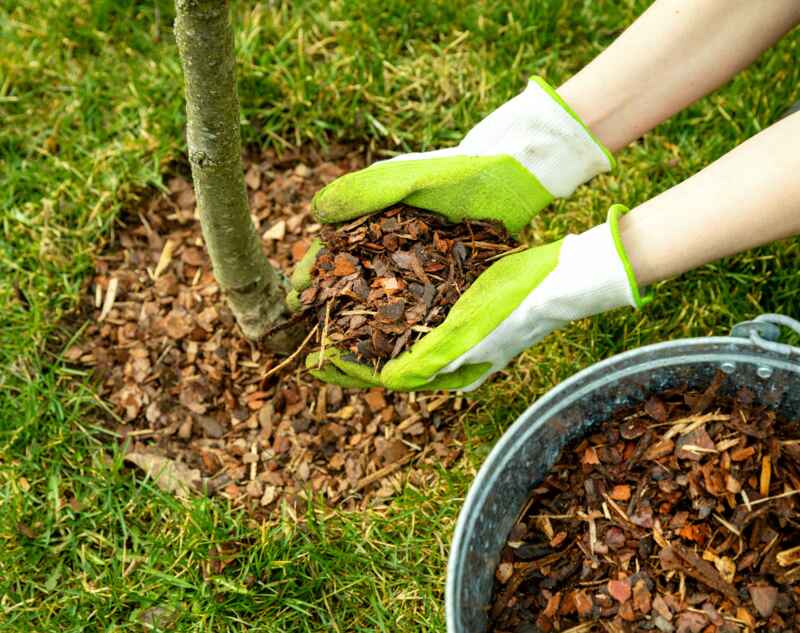
Photo Credit: ronstik / Canva Pro / License
Adding mulch to your garden is another way to create a low-maintenance landscape. Using any of the two kinds of mulch in your landscape has advantages:
Organic mulch
This type of mulch will require some maintenance, but its benefits far outweigh the inconvenience. Organic mulch is made from plant-based natural materials, such as wood bark, shredded leaves, pine needles, or grass clippings.
While organic mulch will decompose and need to be replaced about once a year, it will improve soil texture and help retain moisture. Mulching also helps add nutrients to the soil and keeps pesky weeds at bay.
Inorganic mulch
This type of mulch is a one-time buy-and-install project but doesn’t provide as many benefits to your landscape. Inorganic mulch consists of gravel and pebbles or rubber. Since it has limited benefits, this type of mulch is not as widely recommended.
Mulch made of gravel and pebbles is a good option for creating walkways, while organic mulch is preferred for flower beds or around the base of trees. If concerned about weeds, lay landscape fabric underneath either type of mulch.
Advantages of mulching:
- Prevents soil erosion
- Regulates soil temperatures
- Limits weed growth
- Retains soil moisture
- Organic mulches add nutrients to the soil
- Adds color and beauty to your yard
Estimated Cost: Mulch prices vary depending on the type of mulch. For example, wood chips cost around $70 per cubic yard, and bark mulch costs around $65 per cubic yard. Some mulch is even free, such as newspaper, leaves, and pine needles found in the backyard.
6. Use Groundcovers
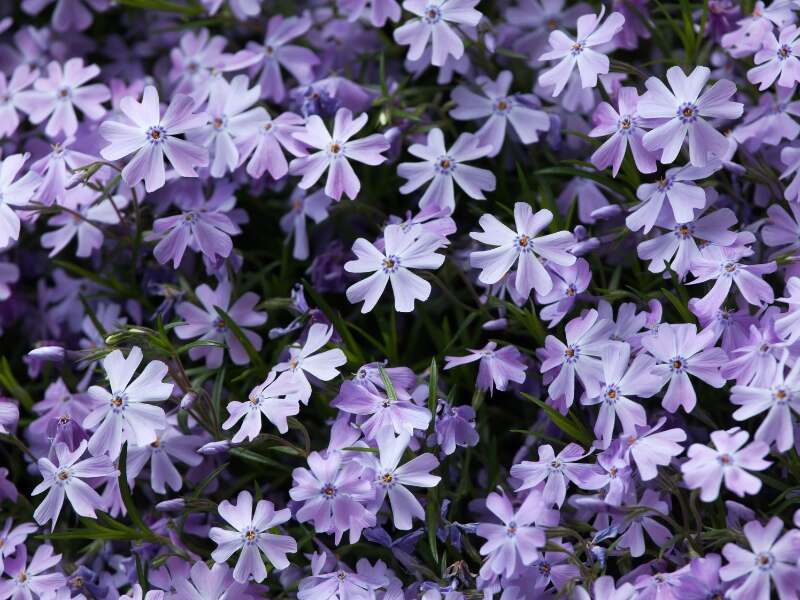
Photo Credit: wrangel / Canva Pro / License
Rather than a needy lawn, consider a groundcover plant instead. These plants are low-growing and spread horizontally. They can bring texture and color to open spaces and under trees without the hassle of regular mowing.
Using them to replace grass in hard-to-mow areas like slopes and hills can save you from that difficult task. Groundcovers are also very versatile. They help control weed growth and erosion and also provide surrounding plants protection from harsh weather.
Recommended groundcovers for Maryland:
- Creeping phlox
- Juniper
- Moss phlox
- Partridgeberry
- Sedums
Advantages of groundcovers:
- They are easier to maintain
- Excellent alternative to higher maintenance grass
- Adds a splash of color and texture to your landscape
Estimated Cost: Landscaping projects typically range between $4.50 and $26 per square foot. The total cost of replacing grass with a groundcover will depend on how much grass you remove, obstacles in the landscape, and which groundcover you plant.
7. Install an Automatic Irrigation System
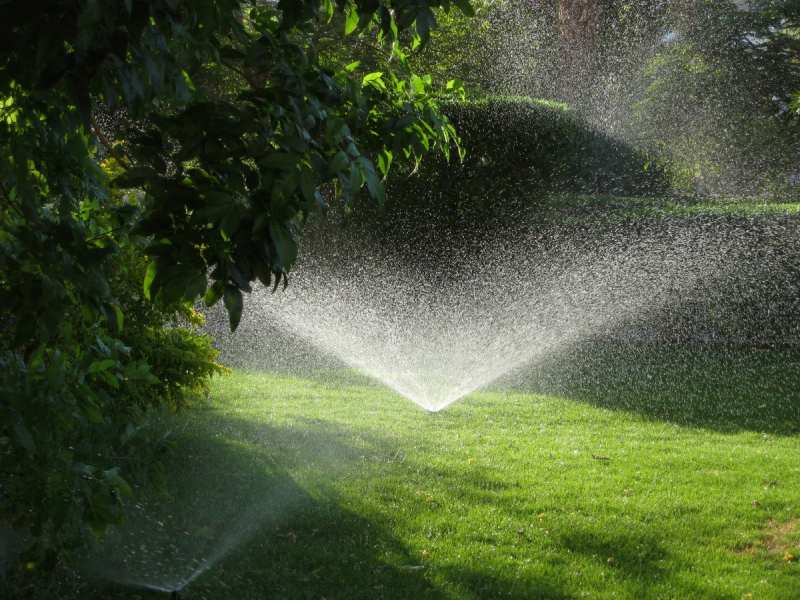
Photo Credit: PxHere / CC0 1.0
Why waste time watering plants when you can have an automatic system do it for you? Not only does it save you time, but installing an irrigation system also helps take the guesswork out of watering your delightful daffodils. Plus, most irrigation systems automatically detect soil moisture.
They will automatically turn on when the soil is dry and detect if the soil is already wet from a recent rainshower. This feature helps save water by not turning on and risking over-watering.
Advantages of automatic irrigation systems:
- Save water, time, and money
- Accurately meet your lawn’s water needs
- Ensure even water distribution
- Turn on when moisture levels are low
Estimated Cost: On average, installing an irrigation system ranges between $2,285 and $5,250.
8. Opt for Container Gardens
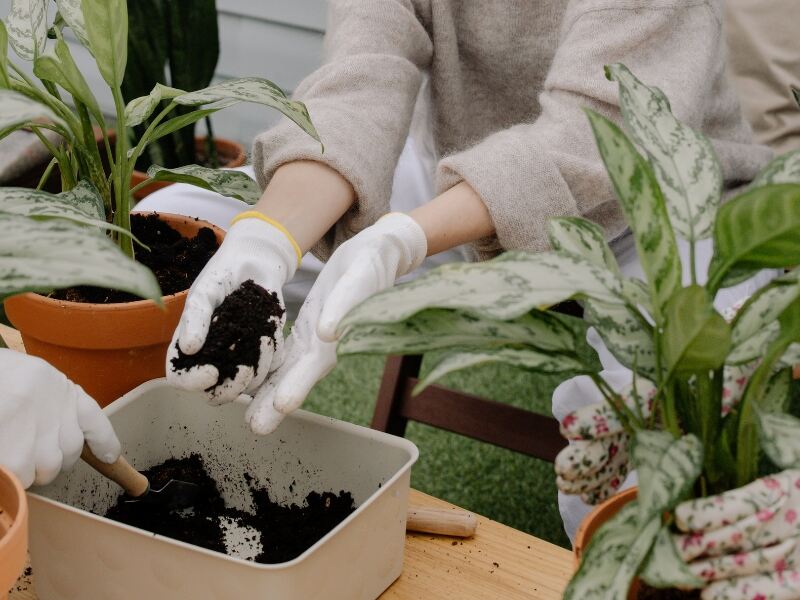
Photo Credit: Pexels / Canva Pro / License
Rather than planting a garden directly into the ground, try using containers. Moving your garden into containers will limit weeds and help keep out unwanted pests, ultimately creating a low-maintenance garden.
With a container garden, you also don’t need to crawl around in the dirt on your hands and knees. This is a huge plus for anyone with a physical ailment that impedes their ability to garden.
If you are the kind of person that likes to change out the plants with the seasons, containers are a great way to do it often without worrying about the impact on the soil in your garden.
Recommended plants for container gardening:
- Black-eyed Susan
- Blue mist shrub
- Blue sedge
- Cardinal flower
- Celosia
- Coneflowers
- Daffodils
- Dahlia
- Daisies
- Lilies
- Marigolds
- Petunias
- Tulips
- Zinnia
Advantages of a container garden:
- Containers can add colors, shapes, and patterns to your landscape
- Containers are portable and make it easy to bring inside during a cold snap
- Less hassle with weeds and pests
- Position your container higher off the ground so you don’t have to bend or strain your back
Estimated Cost: Container gardening doesn’t have to be expensive. A packet of seeds can cost as low as 50 cents, while 1 cubic foot of potting mix averages around $14.73 per bag. The real cost variable is the material you use to build your container garden or the cost of the ceramic or other pots.
FAQ About Low-Maintenance Landscaping in Maryland
Generally, it’s recommended to have your system checked once a year. But it’s best to ask the landscaping company that installed your system for their recommendation and schedule regular maintenance directly with them.
Since we live in a transition zone, keeping a healthy landscape can often be quite challenging. Knowing that Maryland falls into USDA zones 5b to 8a also can be key to choosing the right plants that will make your landscape the envy of the neighborhood.
Tall fescue is the best cool-season grass to use if you want a low-maintenance lawn in Maryland. It’s well-adapted to the region’s climate and soil conditions, and its slow growth rate reduces mowing frequency. Since it’s less prone to diseases and pests, it’s also easier to maintain without intensive care or chemical treatments.
Ready For a Low-Maintenance Landscape?
No matter how you choose to spend your weekends, whether at the beach during the summer, hiking the mountains in the fall, or visiting one of the many historical landmarks within our amazing state, there’s no reason to need to worry about tending to high-maintenance landscaping.
Whether you live in Baltimore, Frederick, Ocean City, Annapolis, or one of Maryland’s beautiful towns, let us help you find a lawn care pro near you that will be sure to have your lawn looking its best.
Main Photo Credit: 12019 from Pixabay / Canva Pro / License

